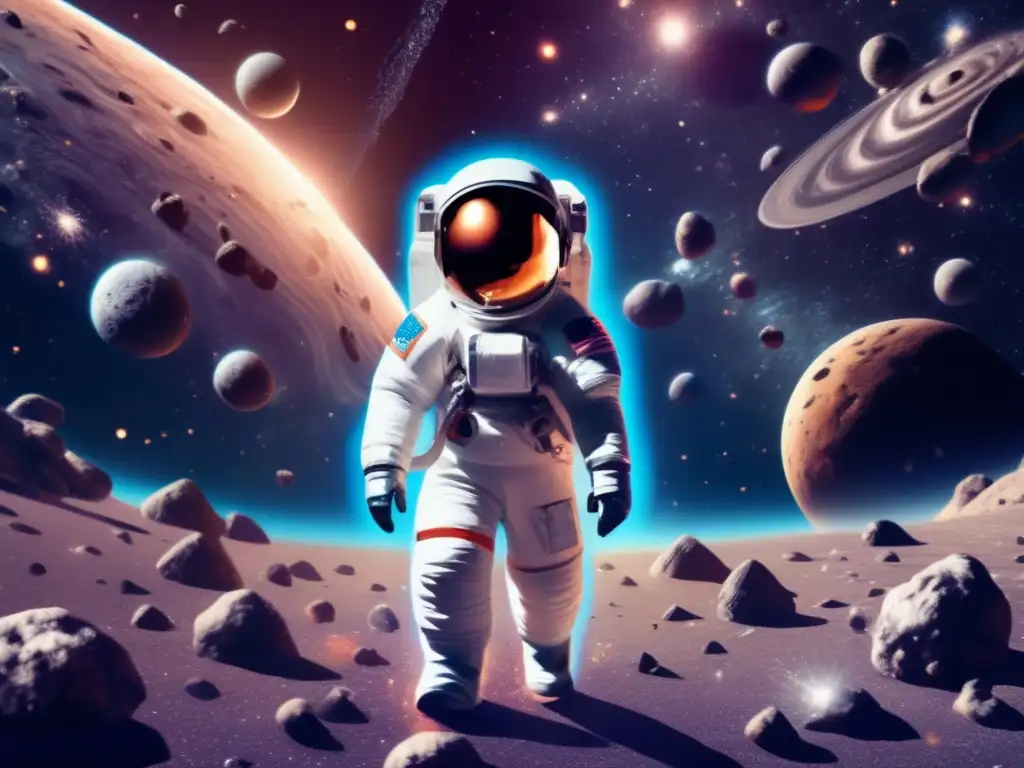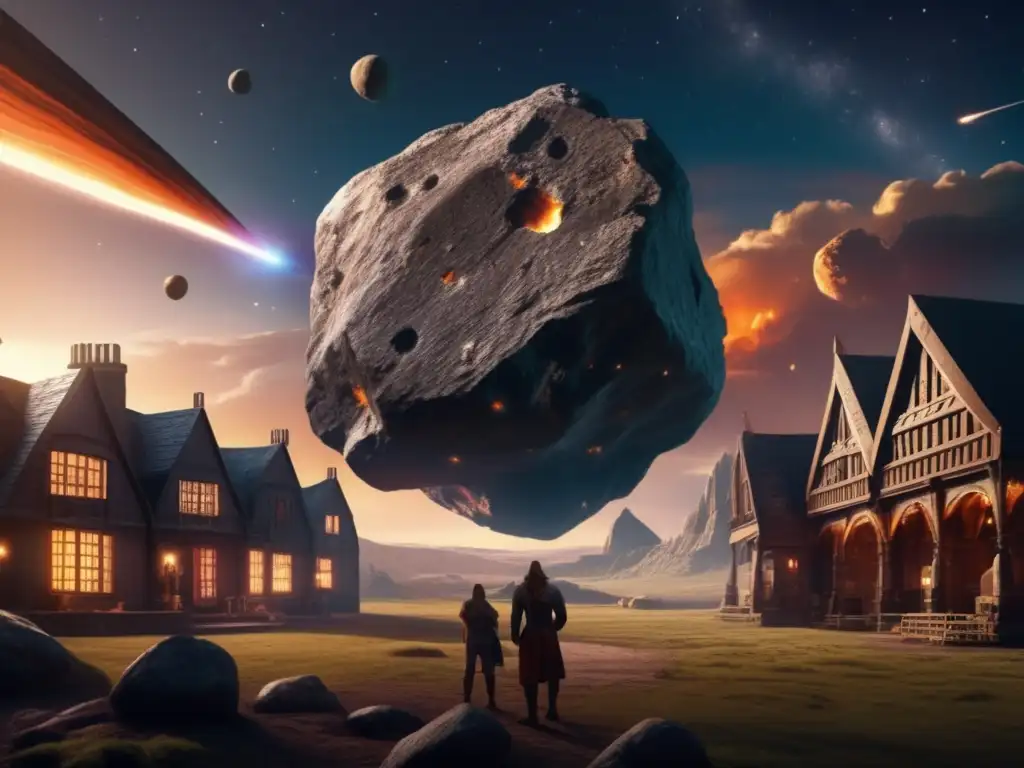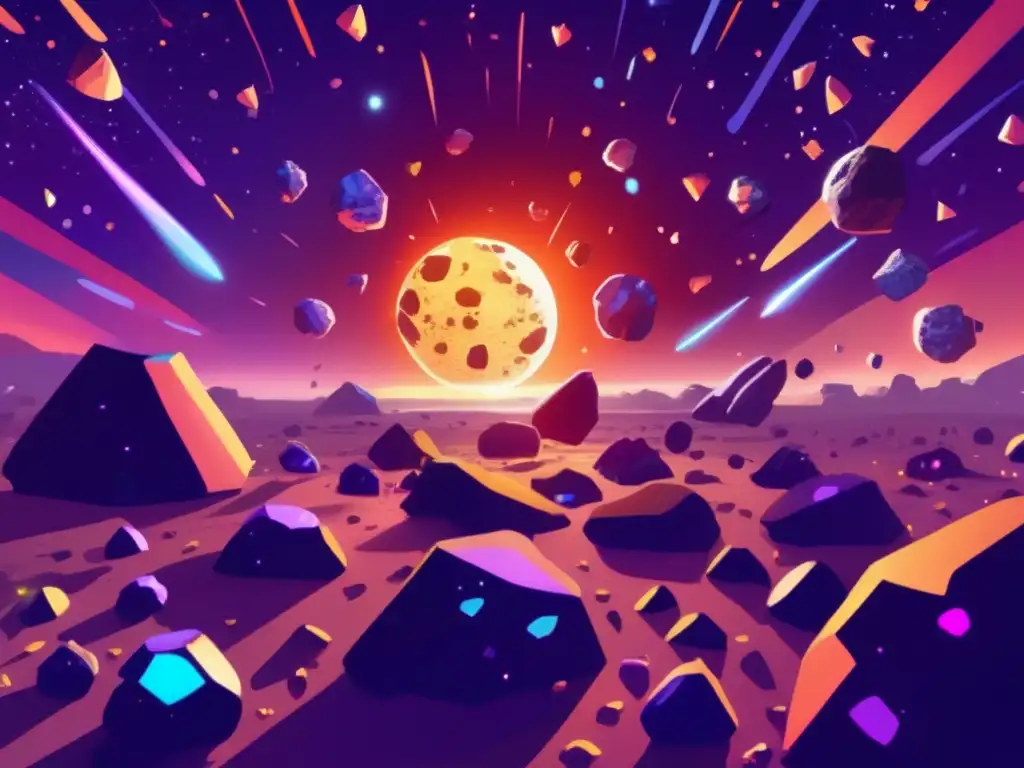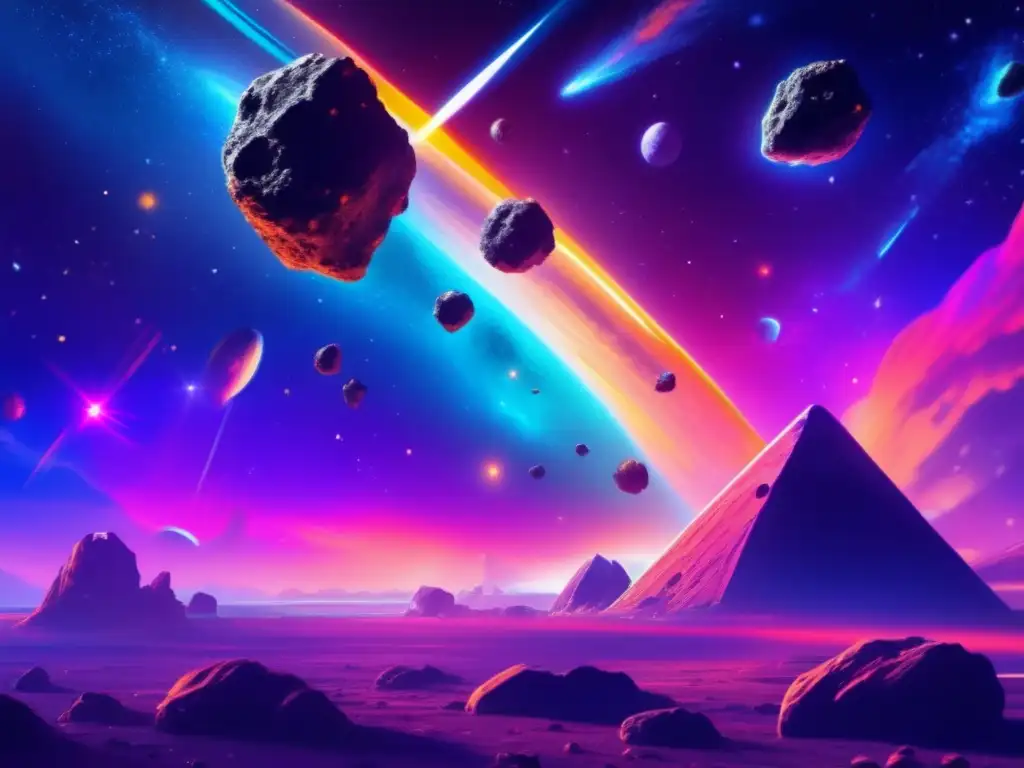Star-studded Sagas: Asteroids In Old English Epics

Introduction
Asteroids have been present in human culture since ancient times, inspiring myths, legends, and stories that have been passed down through generations. One of the most fascinating aspects of asteroids is their connection to old English epics, which provide a unique perspective on how asteroids were perceived in different cultures over time. This article aims to explore the mythology surrounding asteroids in old English epics, shedding light on their cultural significance and the beliefs associated with these celestial objects.
Beowulf: Celestial Guardians and the End of the World

The Dragon's Treasure
In Beowulf, one of the oldest surviving works of English literature, an asteroid-like object plays a prominent role in the narrative. When the dragon in the story is killed, the treasure it was guarding is uncovered, including an object described as "a great bright gem" that is said to glow in the dark. This gem is likely a reference to an asteroid, emphasizing their value and beauty.
The Doom of the Cosmos
In the apocalyptic conclusion of Beowulf, an asteroid is mentioned as being one of the harbingers of the end of the world. The poem describes the sun going dark, stars falling from the sky, and the earth trembling, culminating in the collision of a fiery object with the planet. This asteroid is seen as a symbol of destruction and chaos, bringing about the end of all things.
The Wanderer: A Journey through Space and Time

The Solitary Traveler
The Old English poem The Wanderer features an asteroid as a metaphor for the loneliness and isolation of the protagonist. The poem describes the wanderer as an asteroid-like object, wandering through space with no companions or direction. This image is a powerful evocation of the human condition and our search for meaning in a vast universe.
The Eternal Cycle
Another interpretation of the asteroid symbol in The Wanderer is that it represents the cyclical nature of life and death. Just as asteroids move in elliptical orbits around the sun, so too do humans move through cycles of birth, life, and eventual death. The asteroid serves as a reminder of the impermanence of all things and the importance of cherishing the time we have.
Other Old English Epics: From Heroes to Harbingers

The Phoenix Jewel in The Phoenix
The Phoenix, an Old English poem, features a jewel that is described as being as bright as a star. This jewel is said to be made from an asteroid that fell to earth, imbuing it with extraordinary powers of healing and resurrection. The asteroid becomes a symbol of hope and renewal, a sign that even in the darkest of times, there is always a chance for redemption.
Grendel's Mother in Beowulf
In Beowulf, Grendel's mother is depicted as living in an underwater cave, which is sometimes interpreted as a metaphor for the asteroid belt between Mars and Jupiter. This belt is believed to be the remnants of a destroyed planet, and some have speculated that Grendel's mother may represent the last survivor of that planet. This adds another layer of complexity to the character, making her both a villain and a victim of circumstances beyond her control.
Frequently Asked Questions

-
Did old English epics believe that asteroids were real?
While ancient cultures did not understand asteroids as we do today, they did observe and document their movements in the sky. The symbolism surrounding asteroids in old English epics suggests that they held considerable cultural significance, regardless of their scientific knowledge.
-
What other cultures have myths or legends about asteroids?
Asteroids have been a source of inspiration for many cultures throughout history, including Greek, Roman, Chinese, and Native American cultures, among others.
-
What is the asteroid belt?
The asteroid belt is a region of the solar system between Mars and Jupiter that contains millions of small, rocky objects that orbit the sun.
-
How do asteroids impact our lives?
Asteroids have shaped our planet's history, impacting the surface and causing mass extinctions. They also hold vast mineral resources and have potential uses in space exploration and colonization.
-
Can we predict when an asteroid will collide with Earth?
While much progress has been made in asteroid detection and tracking, predicting an impact with certainty is still difficult. However, ongoing efforts to improve asteroid monitoring and deflection strategies hold promise for mitigating the risk of catastrophic collisions.
Conclusion
Asteroids have been a part of human culture since the dawn of civilization, inspiring myths, legends, and stories that have endured through the ages. The old English epics offer a unique perspective on the symbolism and cultural significance of asteroids, revealing the deep connections between our collective imagination and the cosmos. By exploring these stories, we can gain a deeper appreciation for the beauty, mystery, and complexity of the universe and our place in it.
Thank you for reading this article on www.asteroidrealm.com. We encourage you to share your thoughts in the comments section and to engage with our community by subscribing, sharing the article on social networks, or exploring other resources on the website.
Additional Resources

 Asteroids In Hindu Cosmology: A Deep Dive
Asteroids In Hindu Cosmology: A Deep Dive Gods In The Sky: Asteroids In Ancient Egyptian Myths
Gods In The Sky: Asteroids In Ancient Egyptian Myths Supernatural Sky: Asteroids In Aztec Religious Texts
Supernatural Sky: Asteroids In Aztec Religious TextsIf you want to discover more articles similar to Star-studded Sagas: Asteroids In Old English Epics, you can visit the Asteroid Mythology category.
Leave a Reply

Articulos relacionados: